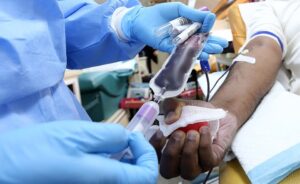Did you know?
- Albinism is a genetic condition inherited from both parents that occurs worldwide, regardless of ethnicity or gender.
- The common lack of melanin pigment in the hair, skin and eyes of people with albinism causes vulnerability to sun exposure, which can lead to skin cancer and severe visual impairment.
- As many as 1 in 5,000 people in Sub-Saharan Africa and 1 in 20,000 people in Europe and North America have albinism.
- In some countries people with albinism suffer discrimination, poverty, stigma, violence and even killings.
- In some countries, women who give birth to children with albinism are repudiated by their husbands, and their children abandoned or the victims of infanticide.
- The movie industry has seldom portrayed people with albinism accurately, preferring to depict them as villains, demons or freaks of nature.
- Violence against people with albinism is largely met by social silence and indifference, and is seldom followed by investigations or the prosecution of perpetrators.
The International Albinism Awareness Day is marked and recognised annually on the 13th of June. The day serves to promote awareness and dispel myths about albinism as well as advocate for the well-being and rights of people with albinism.
Background
On December 18, 2014, the United Nations General Assembly adopted a historic resolution establishing June 13 as International Albinism Awareness Day. The day aims to magnify the visibility of persons living with albinism and amplify their often marginalised and unheard voices in all spheres of life. The theme for 2024 is ‘10 years of IAAD: A decade of collective progress’. According to the National Organisation for Albinism and Hypopigmentation (NOAH), the 2024 theme aims to:
- Celebrate the strides made within the albinism movement
- Highlight the tireless efforts of albinism advocacy groups worldwide.
- Reflect on the legal, policy, and practical changes needed for equal rights for persons with albinism.
What is Albinism?
It is a rare, non-contagious genetically inherited difference present at birth. It results in a lack of pigmentation(melanin) in hair,eyes, and skin. Causes vulnerability to the sun and bright light.
It is a lifelong condition but it does not get worse over time. Almost all people with albinism are visually impaired and prone to skin cancer.
There are 2 main types of Albinism:
Oculocutaneous albinism (OCA) – this is the most common type of albinism, affecting the skin, hair and eyes.
Ocular albinism (OA) – this is a rarer type of albinism that affects mainly the eyes.
Global Impact
Prevalence of albinism varies by region. North America and Europe have an estimated prevalence rate of 1 in every 20000 people. However, the condition is much more prevalent in Africa with estimates of 1 in 1,400 people affected in Tanzania and even higher prevalence reported for specific ethnic groups in Zimbabwe and Southern Africa.
The ZimStat Census report of 2022 puts the population of people living with Albinism in Zimbabwe at 9,747.
Health Challenges
Persons with albinism have a high vulnerability to skin cancer due to the lack of pigmentation (melanin). In some countries, a majority of individuals with albinism die from skin cancer between the ages of 30 and 40. They also have permanent visual impairment due to the absence of melanin in the eyes and suffer discrimination based on skin colour.
Access to health checks, sunscreens, lotions, sunglasses, and sun protective clothing is crucial but also very difficult to access in some regions such as Sub-Saharan Africa.
Advocacy and Awareness
There is a need to combat erroneous myths and beliefs influenced by superstitions and misinformation about persons with albinism.
Promote inclusion,education, understanding, and advocate for human rights interventions.










